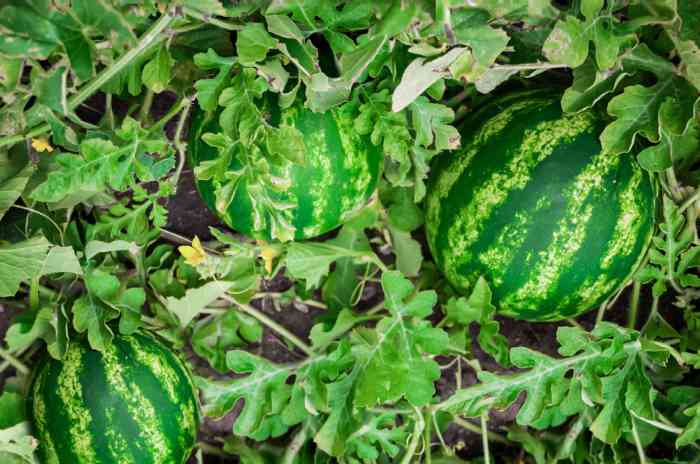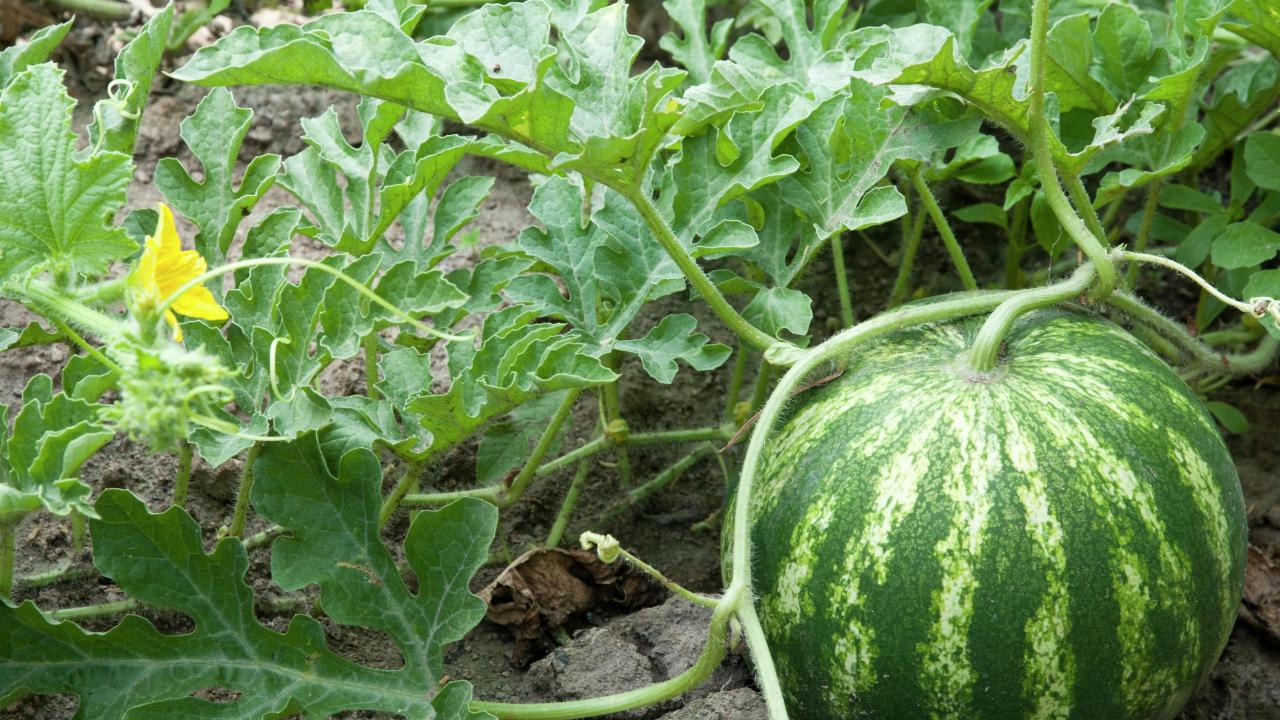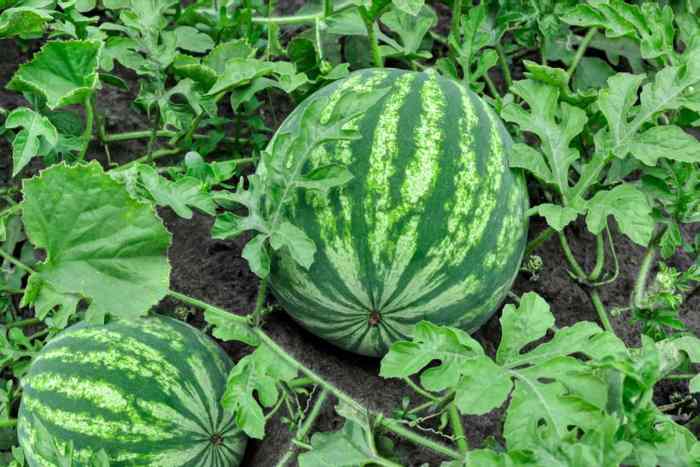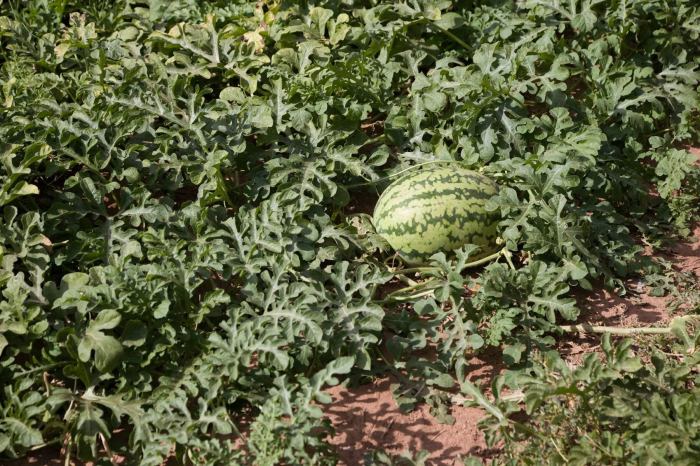How to trim watermelon plants – When it comes to maximizing the productivity of your watermelon plants, proper trimming is essential. By understanding the art of pruning and implementing the right techniques, you can cultivate healthy vines that produce an abundance of sweet and juicy melons.
This comprehensive guide will equip you with the knowledge and skills to trim your watermelon plants effectively, ensuring a bountiful harvest.
Whether you’re a seasoned gardener or just starting out, this guide will provide valuable insights into the intricacies of watermelon plant trimming. By following these expert tips, you can optimize plant health, promote fruit production, and enjoy a thriving watermelon patch.
Plant Health Assessment: How To Trim Watermelon Plants

Inspecting watermelon plants for signs of disease or pests is crucial for maintaining plant health and ensuring optimal growth. Regular monitoring allows for early detection and timely intervention, preventing severe damage or crop loss.
Common signs of disease include wilting, yellowing, or discoloration of leaves; spots, lesions, or powdery mildew on stems or fruit; and stunted growth or deformed fruit. Pest infestations may manifest as holes in leaves, chewed stems, or visible insects on the plant.
Prompt identification of these issues is essential for effective management.
Disease Prevention and Treatment
- Choose disease-resistant varieties.
- Practice crop rotation to prevent soil-borne diseases.
- Use clean seeds and seedlings.
- Provide proper spacing between plants to promote air circulation.
- Water at the base of the plant to avoid wetting foliage.
- Apply fungicides according to manufacturer’s instructions if disease occurs.
Pest Control
- Monitor plants regularly for signs of pests.
- Use companion planting to deter certain pests.
- Apply insecticidal soap or neem oil to control small infestations.
- Use pesticides as a last resort, following label instructions carefully.
By adhering to these practices, growers can maintain healthy watermelon plants, minimize disease and pest problems, and maximize crop yield.
Pruning Techniques

Pruning watermelon plants is essential for optimal growth, fruit production, and disease prevention. By removing unnecessary or damaged plant parts, pruning helps direct the plant’s energy towards developing healthy fruits and maintaining a well-balanced canopy.
When trimming watermelon plants, it is important to remove any excess foliage to promote fruit production. Similar to how trimming ivy plants helps maintain their shape and encourage new growth, trimming watermelon plants allows for better air circulation and prevents disease.
Continue to trim your watermelon plants regularly to maximize their yield and ensure a healthy harvest.
There are various types of pruning cuts used for watermelon plants, each with a specific purpose. Heading cuts, also known as topping, involve removing the growing tip of a vine to encourage lateral branching. Pinching cuts are used to remove small, non-productive shoots or suckers that grow from the main stem or vines.
Thinning cuts are made to remove excess foliage or overcrowded vines, allowing for better air circulation and sunlight penetration.
Pruning Tools and Safety, How to trim watermelon plants
Proper pruning tools and safety precautions are crucial for effective and safe pruning. Use sharp, clean pruning shears or secateurs to make precise cuts. Disinfect the tools with a 10% bleach solution or rubbing alcohol before and after use to prevent the spread of diseases.
Always wear gloves and eye protection to avoid injuries from thorns or plant debris.
Trellising and Support

Trellising watermelon plants offers numerous benefits, including improved fruit quality, increased yield, and reduced disease incidence. By providing vertical support, trellising allows vines to grow upwards, maximizing sunlight exposure and promoting proper air circulation. This prevents fruits from rotting or developing blemishes due to contact with the soil.
Building and Installing a Trellis System
- Choose a trellis material that is sturdy and can withstand the weight of the vines, such as bamboo, metal, or plastic.
- Create a framework by placing posts at intervals of 6-8 feet and connecting them with crossbars.
- Secure the trellis firmly in the ground to prevent it from collapsing under the weight of the vines.
- Install the trellis before planting the watermelon seedlings to allow for proper growth and support from the start.
Training and Supporting Watermelon Vines
Once the trellis is in place, it is crucial to properly train and support the watermelon vines to maximize growth and yield.
- Gently guide the main stem of the vine onto the trellis and secure it with twine or clips.
- As the vine grows, continue to train it upward, ensuring that it is securely attached to the trellis.
- Remove any lateral shoots that grow from the main stem, as they can compete for nutrients and reduce fruit production.
- Provide additional support for heavy fruit by placing netting or slings underneath them to prevent breakage.
Growth and Yield Optimization
Trimming watermelon plants plays a crucial role in maximizing plant growth and fruit production. By removing excess foliage and unproductive vines, trimming promotes better air circulation, reduces disease incidence, and allows the plant to focus its energy on developing larger, sweeter watermelons.
Trimming watermelon plants involves removing excess leaves and vines to promote healthy growth and fruit production. Similarly, trimming spider plants here helps control their growth and encourages the development of new plantlets. Returning to watermelon plant trimming, it’s essential to use sharp shears and avoid over-trimming, as this can weaken the plant.
Spacing and Vine Management
Proper spacing and vine management are essential for optimizing watermelon yields. Planting watermelons too close together can lead to overcrowding, competition for resources, and reduced fruit production. Ideal spacing varies depending on the variety and growing conditions, but generally, plants should be spaced 3-6 feet apart.
Watermelon plants require regular trimming to maximize fruit production. To trim, use sharp shears to remove excess vines and leaves. For optimal growth, focus on removing diseased or damaged foliage. Similarly, queen palms also benefit from trimming to maintain their aesthetic appeal and health.
Learn how to trim a queen palm to promote healthy growth and prevent overgrowth. Returning to watermelon plants, proper trimming techniques ensure a bountiful harvest of sweet, juicy melons.
Vines should be trained to grow horizontally along the ground or supported by trellises. This prevents the vines from becoming tangled and allows for better air circulation and sunlight penetration.
Balanced Fertilization and Watering
Balanced fertilization and watering practices are critical for healthy watermelon plants and optimal fruit production. Watermelons require regular watering, especially during fruit development. However, overwatering can lead to root rot and other problems.
Fertilize watermelon plants regularly with a balanced fertilizer. Nitrogen is essential for vegetative growth, while phosphorus and potassium promote fruit development. Follow the recommended application rates and frequency based on soil test results and the specific fertilizer used.
Seasonal Considerations

Trimming watermelon plants should be timed strategically to maximize plant health and fruit production. The optimal time for trimming varies depending on the climate and growing conditions.
In warmer climates, trimming can begin in late spring or early summer, once the plants have established a strong root system and have begun to vine. In cooler climates, trimming may need to be delayed until mid-summer when the weather has warmed sufficiently.
Preparing for Winter or Dormancy
In areas where watermelons are grown as an annual crop, trimming should cease in late summer or early fall to allow the plants to prepare for winter or dormancy. This will help the plants to conserve energy and nutrients for the following growing season.
Conclusive Thoughts
With a keen eye for plant health, the right pruning techniques, and a touch of patience, you can transform your watermelon plants into thriving vines that will reward you with a bountiful harvest. Remember, the key to successful watermelon trimming lies in understanding the plant’s growth habits and tailoring your approach to its specific needs.
So embrace the art of pruning, and let your watermelon plants flourish to their full potential.
Clarifying Questions
Why is it important to trim watermelon plants?
Trimming watermelon plants removes excess foliage and unproductive vines, allowing the plant to focus its energy on producing fruit. It also improves air circulation, reducing the risk of disease and promoting healthy growth.
When is the best time to trim watermelon plants?
The optimal time to trim watermelon plants is during the early stages of growth, when the vines are actively producing new leaves and shoots. Avoid trimming during flowering or fruiting, as this can damage the plant and reduce yield.
What are the different types of pruning cuts?
There are three main types of pruning cuts: heading cuts, thinning cuts, and sucker removal. Heading cuts remove the growing tip of a vine, thinning cuts remove entire branches or shoots, and sucker removal eliminates small shoots that grow from the main stem.